Project P7 | Ayelén González Montoro
Dissecting the interplay between vacuolar contact site plasticity and sphingolipid homeostasis
We study the contact sites of the vacuolar membrane formed by the protein Cvm1, as a model to understand how contact site plasticity can determine membrane homeostasis.

© Ayelén González Montoro
Project Summary
Dr. Ayelén González Montoro
Osnabrück University
School of Biology/Chemistry
Research Group Cellular Communication

Membranes with distinct compositions and specific biophysical properties are crucial for organelle function. Mechanisms must be in place to keep them homeostatic despite environmental and metabolic changes.
Membrane contact sites form a network that connects the different organellar membranes in the cell through non-vesicular lipid transport, playing a major role in bulk lipid transport, fine-tuning of lipid composition, and lipid signaling. The network of membrane contact sites displays plasticity: the proteome and extent of the contacts change in response to metabolic and environmental cues.
In this project, we will focus on understanding the connection between the plasticity of membrane contact sites and membrane lipid homeostasis. We have recently identified the protein Cvm1 (Contacts of the vacuole membrane 1), which forms membrane contact sites between the lysosome-like vacuole of Saccharomyces cerevisiae cells and the endoplasmic reticulum, the mitochondria, and the peroxisomes.
Levels of Cvm1 affect the cellular sphingolipid content, influencing both complex sphingolipids and biosynthetic intermediates. Interestingly, the levels of sphingolipids control the localization of the protein to the contact sites. This indicates that Cvm1 is part of a plastic network linking membrane contact sites and the sphingolipid composition of membranes. Thus, we propose to use this system as a model and starting point to understand the interplay and cross-regulation between membrane contact sites and membrane lipid composition.
Project-related Publications
Bisinski, D.D., Gomes Castro, I., Mari, M., Walter, S., Fröhlich, F., Schuldiner, M., González Montoro, A. (2022) A novel component of multiple vacuolar contact sites is required for sphingolipid homeostasis. J Cell Biol. In Press. DOI:10.1083/jcb.202103048.
Vargas Duarte, P., Hardenberg, R., Mari, M., Walter, S., Reggiori, F., Fröhlich, F., González Montoro, A., Ungermann, C. (2022) The yeast LYST homolog Bph1 is a Rab5 effector and prevents Atg8 lipidation at endosomes. J Cell Sci. 135, jcs259421.
González Montoro, A., Vargas Duarte, P., Auffarth, K., Walter, S., Fröhlich, F., Ungermann, C. (2021). Subunit exchange among endolysosomal tethering complexes is linked to contact site formation at the vacuole. Mol Biol Cell 32, br14.
González Montoro, A., Auffarth, K., Hönscher, C., Bohnert, M., Becker, T., Warscheid, B., Reggiori, F., van der Laan, M., Fröhlich, F., Ungermann, C. (2018). Vps39 Interacts with Tom40 to Establish One of Two Functionally Distinct Vacuole-Mitochondria Contact Sites. Dev. Cell 45, 621-636.e7.
Malia, P.C., Numrich, J., Nishimura, T., González Montoro, A., Stefan, C.J., Ungermann, C. (2018) Control of vacuole membrane homeostasis by a resident PI-3,5-kinase inhibitor. Proc Natl Acad Sci USA 115, 4684-4689.
González Montoro, A., Bigliani, G., Valdez Taubas, J. (2017). The shape of the transmembrane domain is a novel endocytosis signal for single-spanning membrane proteins. J Cell Sci 130, 3829–3838.
González Montoro, A., Ungermann, C. (2015). StARTing to understand membrane contact sites. Trends Cell Biol. 25, 497–498.
Trenchi, A., González Montoro, A., Valdez Taubas, J., Maccioni, H.J.F. (2013) Short transmembrane domains with high-volume exoplasmic halves determine retention of Type II membrane proteins in the Golgi complex. J Cell Sci. 126, 5344-9.








